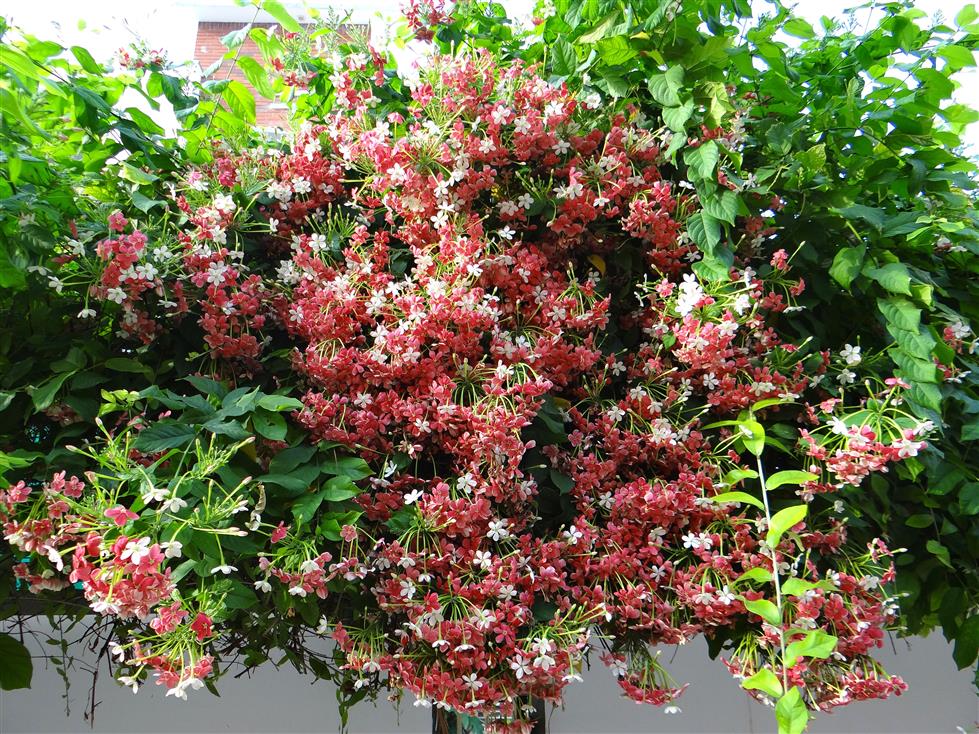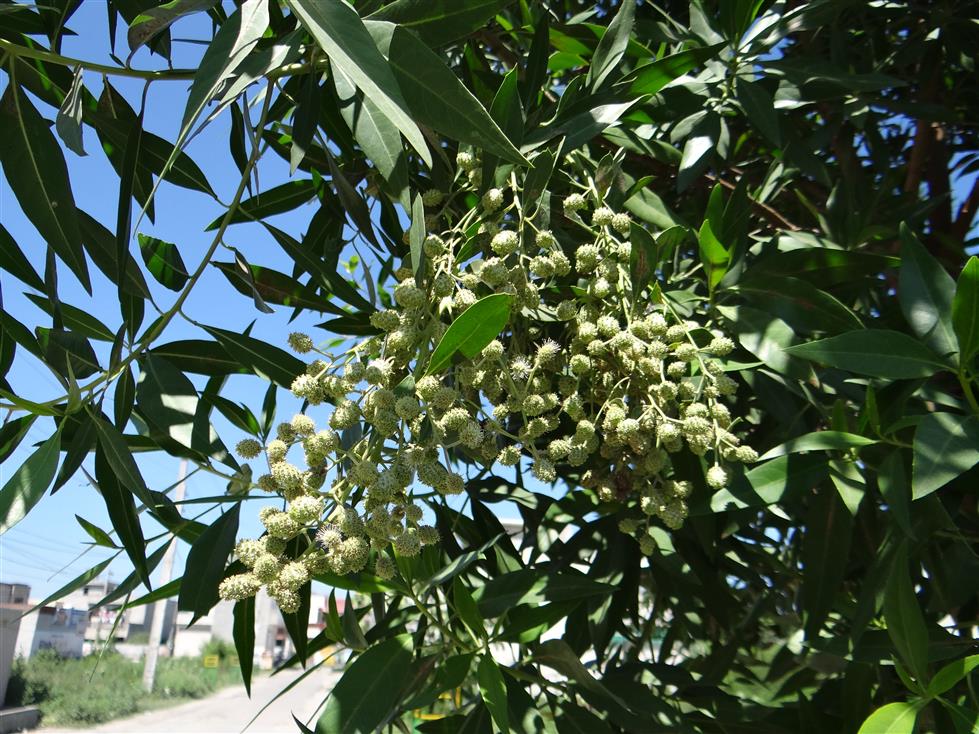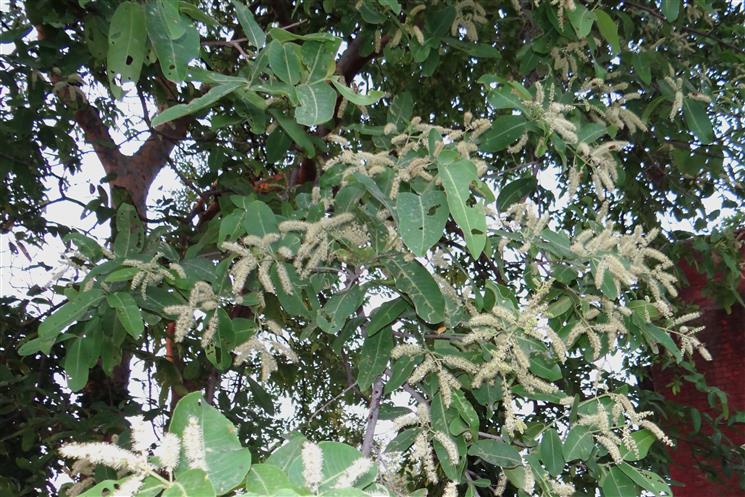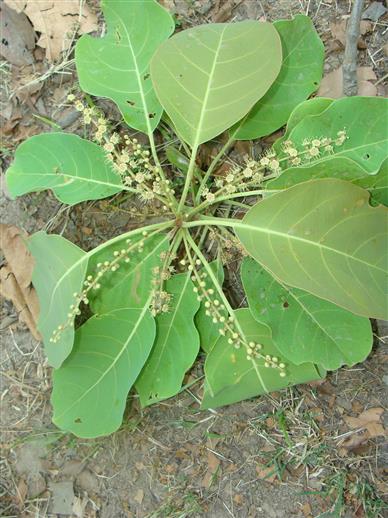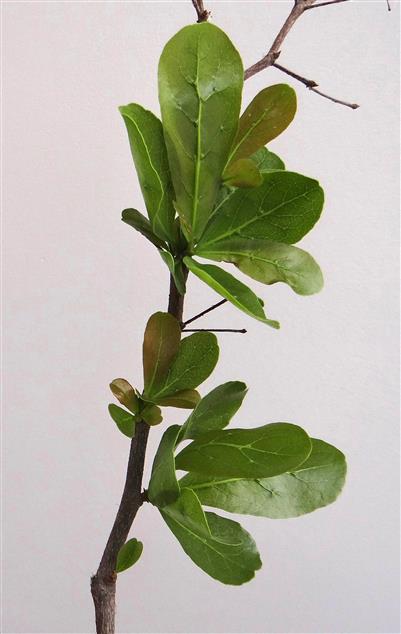COMBRETACEAE
Trees, shrubs or undershrubs, often climbing. Leaves alternate, subopposite, opposite or whorled, simple, entire, exstipulate. Inflorescence spike, racemes or panicles. Flowers usually bisexual, actinomorphic or nearly so, 5-, rarely 4-merous, epigynous, bracteate. Sepals 4-5, connate, calyx often bracteolate at base; tube adnate to the ovary and prolonged above it; lobes valvate, rarely imbricate, persistent or deciduous. Petals 4-5, small, connate, imbricate or valvate, inserted on the calyx or wanting. Stamens incurved in bud, inserted on the calyx, usually twice as many as calyx lobes, in 2 series, lower opposite the calyx lobes, upper opposite the petals; filaments free, connective often apiculate; anthers versatile or dorsifixed, bithecous, longitudinal dehiscence. Monocarpellary, ovary inferior, generally angled, angles equal in number and alternating with calyx-segments, 1-locular, usually crowned with a disk, ovules usually 2-5, pendulous from apex of the ovary on long, often united funiculus; style filiform; stigma usually small. Fruit usually dry, indehiscent, leathery, drupe-like, 2-5-angled or -winged. Seed 1.
10 genera and about 530 species
